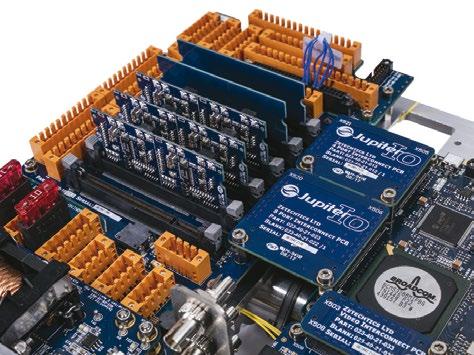
11 minute read
ARGOS: Forssea Releases New Smart Light Intervention Class ROV
FORSSEA RELEASES NEW SMART LIGHT INTERVENTION CLASS ROV AND TARGETS USV MARKETS & REMOTE-CONTROLLED OPERATIONS
France based Forssea Robotics have been developing state of the art underwater technologies for over 3 years now, and through its specialist Research and Development team have been working on a new project since the beginning of 2019.
Advertisement
Courtesy of Forssea Robotics
With the evolving ROV market heading towards new horizons, Forssea Robotics have taken the opportunity to develop a new light intervention class Smart ROV called ARGOS. ARGOS is a development based on the same technology as the previously developed autonomous docking ROV, ATOLL. The two vehicles share the same au tonomous technology advancements, but the ARGOS ROV has the added versatility to install full survey equip ment and light intervention capabilities.
ARGOS is a state-of-the-art, electrically powered ROV system. It has been designed for a wide range of subsea tasks including structure and asset inspection, diver mon itoring and support, maintenance, survey, and autonomous tracking. The ROV is compact in size and weighs only 190kg (including payload). The standard system is rated to a water depth of 500m. The ROV can also be customized with simple modifications to suit either 1,000m or 2,000m ratings. This gives clients a range of options to operate the system globally.
The Oil and Gas market was initially defined as the primary market for the ARGOS ROV. However, with some interested clients from across all sectors of the marine and subsea in dustries, ARGOS is now considered a game changer for ROV work within the renewables industry.
VERSATILE LIGHT INTERVENTION CLASS SMART ROV
The ROV is supplied with a 320VDC power supply directly from the surface. This allows to use the ROV in a live boat configuration from a light surface vessel. The system can also be interfaced with an adapted size commercial Tether Management System (TMS) and Launch and Recovery System (LARS). The vehicle is capable of carrying a wide range of cameras and sensors such as sonars and altimeters.
ARGOS has also been designed to adopt various larger tooling and sensors by utilising custom built skids at the bottom of the ROV such as an electric 5-Function manipu lator, Class 1- 4 torque tool, and cleaning tools.
ARGOS is propelled with 6 thrusters; four axials positioned in the vectored configuration and two verticals. All the thrusters’ vertical positions can be adjusted manually be fore the dive. Axials thrusters’ angles can also be adjusted to suit various subsea tasks or different environmental conditions. By designing the thrusters in this configuration, the ROV is able to operate in currents up to 2knts, speeds often found in shallow water.
In terms of subsea tooling and survey sensors the industry has seen a trend with manufacturers and suppliers opting

Courtesy of Forssea Robotics

Courtesy of Forssea Robotics

to develop lighter and more compact tooling and sensors. This is an ideal scenario and is in line with Forssea Robotics’ development roadmap.
With the development of electrical torque tools in the subsea market, this makes the ARGOS system perfectly adapted to carry such payloads and conduct light intervention work on structures that were once only capable through a work class ROV. Furthermore, by going electric the tooling does not have the same constraints as hydraulic equivalents; there is no need to carry heavy valve packs for the torque tool, and there is also no oil within the system to be affected by temperature. This makes tool accuracy better for operating valves.
Within the last few years, we have seen that there are now various survey sensors that were once only capable of being installed on work class ROVs, such as high-grade pipe and cable trackers. This has allowed interfacing such equipment to a compact ROV the size of ARGOS: a win-win opportunity for the equipment and ROV suppliers. The universal underslung skid of ARGOS has been specifically designed to accommodate a wide range of tooling and sensors, making change-out of tooling offshore more optimised.
Courtesy of Forssea Robotics

One such survey and inspection system is the Flooded Member Detection (FMD) tool from Subsea Technology & Rentals (STR). Forssea Robotics has an exclusive commercial partnership with for the rental supply of their V-LOC system. The STR SeaGamma FMD system has been designed as a modern inspection tool to reliably determine if a subsea structure has sustained water ingress as a result of corrosion, weld failure, or damage. The system is operational without the need to clean away marine growth build-up.
The STR FMD Rotator Skid utilises an actuator to rotate the survey frame, obviating the requirement for the host vehicle to return to the surface to change orientation of the frame.
PLUG & PLAY USV INTERFACING
One of the main benefits of the Surface Control System of ARGOS is that it is equipped with Transmission Control Protocol/Internet Protocol (TCP/IP), meaning the system is already set up for remote piloting. This removes the need for personnel to operate the ROV on site. Forssea Robotics have already performed pool trials of the TCP/IP control system by having the vehicle operated from their R&D base in Paris, and the ROV located in test pools in the south

Courtesy of Forssea Robotics
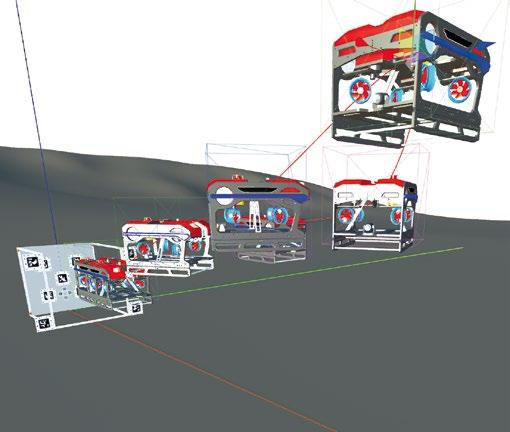
Courtesy of Forssea Robotics

of France. This is the company’s major step towards full remote control of the ROV. The standard ROV system also incorporates a fully digital touch screen hand controller.
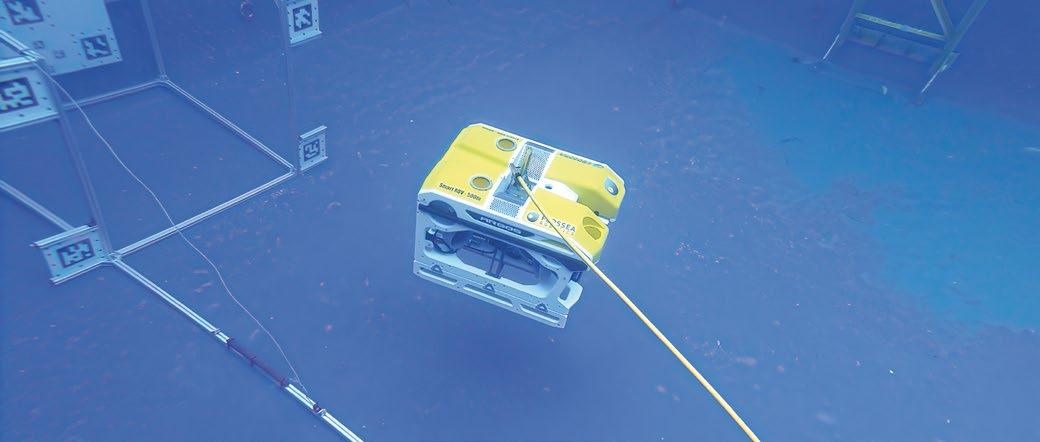
One of the other advantages of the TCP/IP control is being able to integrate ARGOS into an Unmanned Surface Vessel (USV). After discussions with providers this is a concept that operators will develop further, especially for wind farm inspection and survey campaigns. The ROV also comes with a network supervised and regulated 320VDC power supply. This allows the ROV to be used in a live boat configuration from light surface vessel. The system can also be interfaced with an adapted size commercial TMS and LARS.
The ARGOS ROV can perform tasks in supervised mode by having personnel control the ROV from an onshore control centre. Moreover, the entire ARGOS intelligence and soft - ware is embedded inside the vehicle, allowing it to react based on pre-programmed behaviour.
ADVANCED AUTONOMOUS FEATURES TO ALLOW MORE RELIABLE REMOTE CONTROL
In terms of autonomy, the Forssea Robotics specialist Robotics and Software team who were behind the same development of the ATOLL autonomous docking ROV have brought even more aspects of autonomy to ARGOS.
With the fast development of full resident systems ap - proaching, the autonomous technology of ARGOS will be able to perform a full autonomous inspection or survey campaign and eventually in the future a fully autonomous intervention operation such as valve operations.
“However, we believe that the home for resident ROVs is not the seabed, but USVs (Unmanned Surface Vehicles),” says Gautier Dreyfus, CEO of Forssea. “The requirements are similar: long im - mersions cycles and all electric design to reduce maintenance, supervised piloting mode with low latency, and autono- mous features to deal with communication loss and preprogrammed operations such as pipe survey or asset inspection.”

Courtesy of Forssea Robotics

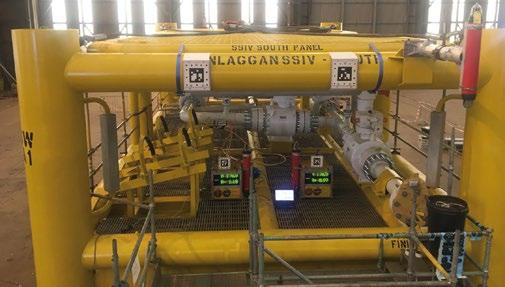
Courtesy of Forssea Robotics
The standard ARGOS version currently comes with “smart” piloting modes including latency management, autodiagnosis features, dynamic positioning (based on visual, acoustic and/or INS/DVL sensors) and GO-TO features. Visual docking can be used to safely dock the ROV back inside its TMS, especially in challenging weather conditions.
In addition, Forssea is currently working on a new intuitive mission planning and supervision tool that will be sold as an option. This software platform is currently being trialled, with commercial release planned for early 2021.
The ARGOS ROV platform has been carefully designed to accommodate a range of client requirements: whether this be a basic observation ROV or a fully equipped autono mous system for advanced subsea operations.
“Service contractors need versatile hardware platforms with intuitive and evolving high-value software,” says Gautier Dreyfus. “We want to offer this open platform with a longterm robotics service.” Stephen Miller, Project and BD Manager at Forssea Robotics explains “We have seen interest from subsea service suppliers and survey contractors for the use of the V-LOC system for many applications.
“Initially we developed V-LOC for the key purpose for moni toring of structure positioning during installation. Now however, we are being asked if V-LOC can perform more complex tasks which would normally require a lot more survey equipment. Survey contractors are also being en couraged to propose alternative technologies as part of their tenders, so the V-LOC system fits in well with these proposals. Forssea Robotics and STR are currently in discussion with various clients in which they feel our technology can provide a niche solution.”
Further versions of the V-LOC system will be coming to the market this summer which will have modified hardware in order to be operated on deck and land-based operations.
VISUAL LOCALISATION SYSTEM V-LOC
In addition to the development of the ARGOS vehicle over the past year the Forssea Robotics team have been focusing on the development of their Visual Positioning System (V-LOC) which is used for monitoring structures positioning, heading, and attitude: all done visually without the need for any ROV intervention or docking onto the structure. All that’s required is open source QR code markers installed onto the host struc ture, and a Forssea Robotics Nav Cam mounted on the ROV to obtain full 6 degree of freedom absolute positioning of the structure. The Nav Cam is a fully integrated survey sensor that is available for any light or work class ROV.
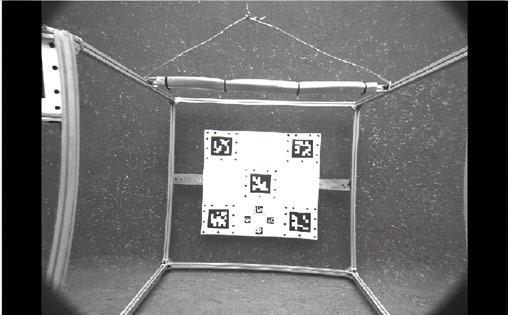
Courtesy of Forssea Robotics
In the summer of 2019, STR acquired eight V-LOC systems to include as part of their client rental pool. More recently they have become the exclusive rentals distributor and com mercial partner of the V-LOC system. By having STR as our partners for the rental supply of the V-LOC system, we are now in a prime position to support client operations globally.
In terms of projects last year, V-LOC has completed off shore trials in Egypt where a suction pile was installed and most recently it has completed operations for the Finlag gan SSIV installation in the North Sea.

Mini and mighty.
OUR USBL FAMILY IS GROWING
NEW
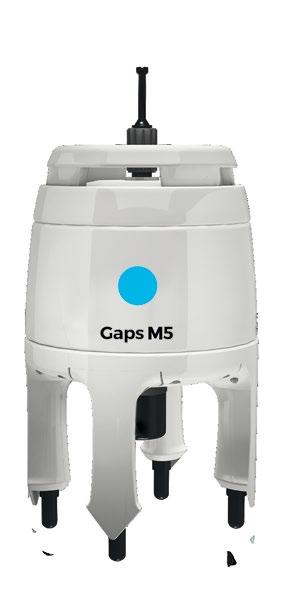
Gaps M5 Export-free and omnidirectional USBL system operating from the surface to medium water depths (995m).
Full Page OE Template - this document can be used as a template layer in InDesign, Photoshop or Illustrator. Plese delete or hide layer before saving final file. Document size- Use bleed dimensions ( 212.72 x 282.575 mm 8.375 x 11.125 in). 24 Port Fast Ethernet Switch for Subsea Use
Trim Size - Actual magazine size (blue dotted line) - 206.375 x 276.225mm 8.125 x 10.875 in 4,000m rated managed switch designed
Allow 3.175mm .125 in outide of trim on each side: Bleed Size - 212.72 x 282.575 mm 8.375 x 11.125 in Any color or image that goes to the edge of the page should extend to the bleed size. Live Area, also called the Safe Zone (light blue rectangle) keep text and logos inside this area12.7 mm .5 in inside of the trim. 180.97x 250.82 mm 7.125 x 9.875 in to meet the requirements of a modern subsea network
OE (Offshore Engineer) prefers ad material to be supplied as PDF (PDF/X-1a:2001).
We also accept ads built in these programs: Adobe InDesign, Quark, Adobe Illustrator and Adobe Photoshop. Please supply all fonts, images, and artwork with ads supplied in these applications.
All supplied material should be 300 dpi, in CMYK color space, and have fonts embedded in all graphics.
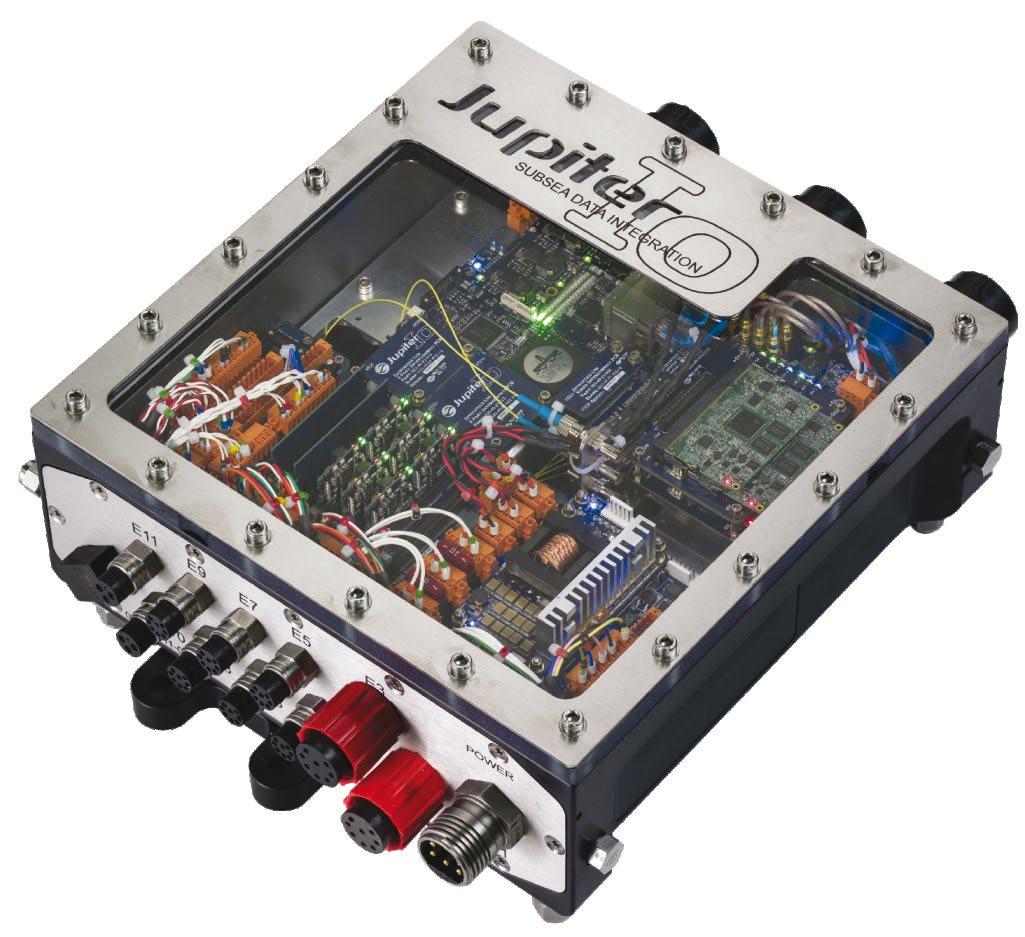
OE does not accept ads built in Microsoft Word, Microsoft Publisher, Microsoft PowerPoint or CorelDraw.

PMS colors printing as CMYK must be converted to CMYK colors. Cropmarks should be offset and not appear in the bleed area. • Optical long distance links via Dual
Redundant 1Gb Single-Mode fibres
Interface to SFP in COTS surface router
Modular internal construction
Serial Data to Ethernet Interfaces
Video Digitiser Interfaces
Comprehensive VLAN functionality
Link Aggregation (LACP)
Spanning Tree Support (STP)
Non-blocking switch fabric
Bandwidth control on ports
Traffic priority (QoS)
